Cinematography is about Painting with Light.
Open any interview with a cinematographer, and the topic they are most interested in must be related to light. Talking about creating awesome light effects in a certain movie, I was even more excited than winning the grand prize!
When writing film reviews, light analysis is also an important angle. Therefore, in this article, we will talk to you about the light in the movie. The examples are not the same as the video courses, and the topics we talked about are broader.
When you were a kid, you played hand shadow play, the trick of using a flashlight to cast shadows on a white wall.
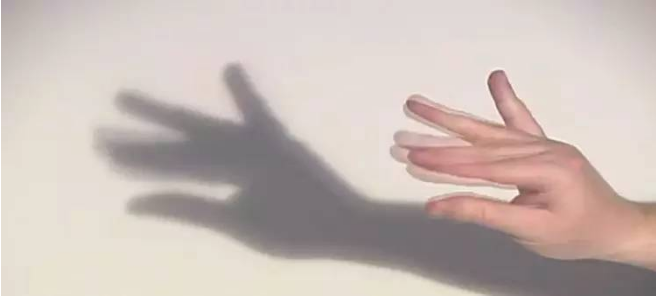
Turn on the flashlight and a clear shadow will be projected on the wall. In the example above, the shadows are clear and the outlines are sharp. Block a napkin in front of the flashlight, wow! The shadow has changed. See below:
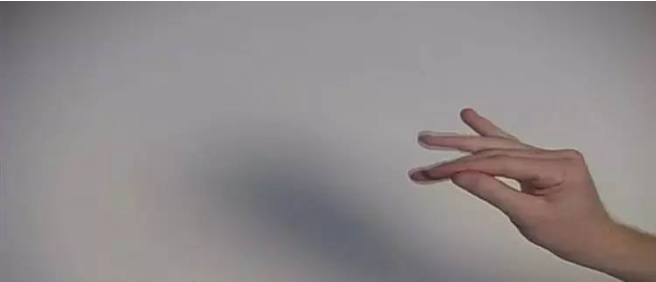
The shadows are blurred and the outline is gone! Obviously, the light texture has changed. Before the napkin was blocked, the light was hard and the projection was very clear. After blocking, the light became soft and the projection was very blurred.
Slide your finger up, look at the shadows in the first two pictures, remember the different visual feelings, we introduce a concept, that is, hard light and soft light.
Hard light: light from a point light source
Point-shaped light source, in general, is a light source that has a small light-emitting area and can condense light, with a clear sense of light direction. Common ones include flashlights, car headlights, and incandescent bulbs.
These are all artificial point light sources, are there any in nature? Of course, the sun on a sunny day is a typical point light source, and the light emitted is hard light. (It is said that although the area of the sun is large, but it is too far away from the earth, we regard it as a point instead of a surface).
Soft light: light emitted by a planar light source
Recall the example of hand shadow just now. The light changed from hard to soft because the hard light emitted by the flashlight was filtered by a paper towel, and the light changed from a dot to a surface.
There are many similar situations, let’s take a look at a soft box. The light passes through a layer of soft light cloth to form a luminous plane, which emits light evenly. Open the soft light cloth, there is actually a light bulb with a point light source hidden inside. The principle is similar to the blurring of the hand shadow just now.
The same is true in the cloudy sky in nature. The thick cloud layer is like a huge soft light cloth, which softens the hard sunlight of the original nature, and evenly shines on the ground, and the shadow becomes blurred.
In a similar situation, in the shadows on sunny days, the direct light is blocked by obstacles and irradiated uniformly in the form of diffuse reflection, forming a soft effect of surface light.
Well, please remember that hard light is the light emitted by a point light source. Soft light is the light emitted by a planar light source, and hard and soft are the difference in texture between the two.
Show you a group of film and television lamps. The upper left corner is a small tungsten lamp, which emits hard light. The power is usually between 650W and 1000W (called 1K). Depending on the color of the lamps, they are commonly known as red-head lights, yellow-head lights and blue-head lights.
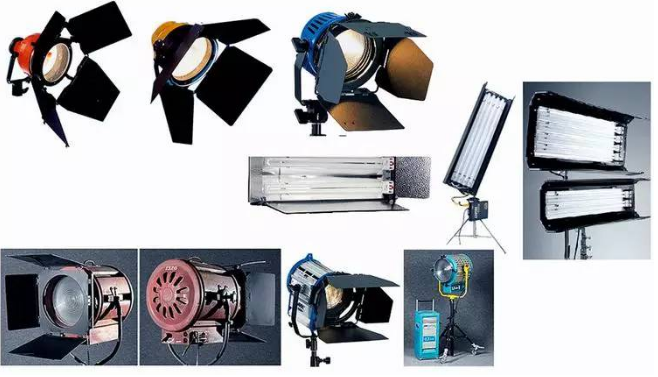
On the right is the three-primary color lamp that has become popular in recent years. A row of tube arrays form a planar light source that emits soft light. It is often used for lighting and still life shooting in the range below the mid-range of people.
Below is a traditional movie dysprosium lamp with high power. 5K is commonplace, and 10K and 15K are not surprising. The front of the bulb is equipped with a focus-adjustable lens group to keep the light in a clear sense of direction. These guys are cumbersome and expensive, and only rich crews are willing to buy them for filming.
Have you noticed that traditional lamps are almost all point light sources that emit hard light, Why? In fact, it’s very simple. It’s easy for hard light to soften. Add a layer of soft light cloth to get it done. Soft light becomes hard light? Humph, that’s basically impossible!
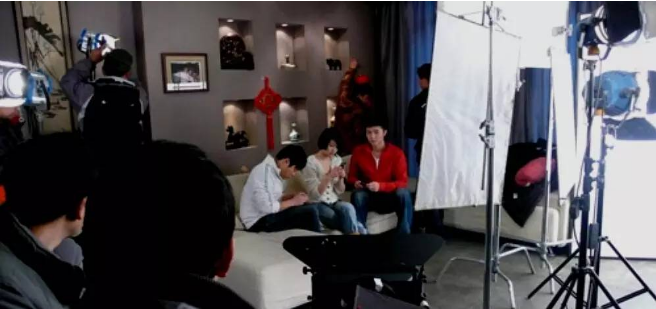
Hard light shapes contour lines, soft light expresses soft texture
Let’s take an example from the scene where the protagonist digs cobblestones in “The Sun Also Rises.”
This scene is a typical sunny outdoor scene, the light source is the sun. Sunlight is projected into the frame from the left of the painting, and a sharp shadow is formed on the right side of the big tree, which has a particularly strong sense of direction. The pebbles in the lower right corner are exposed to direct light and appear very bright, which is the visual focus of the picture.
Cut to the characters to see, the hard light leaves a solid shadow on the characters’ faces, emphasizing the contour lines of the faces, and the characters appear three-dimensional and have a sculptural feeling.
To give another example of the interior scene, from the movie “Listen to the Wind”, the scene where a beautiful female agent meets with the Director of Operation 701, first of all is the environment.
The high-power dysprosium lamp produces a particularly strong sense of direction and hard light. Through the narrow windows, the room is divided into bright and dark light areas with clear outlines. The picture is full of lines and strong atmosphere.
Next cut to the actor screen. Because it involved re-identification of identity, he was given a middle shot in uniform. Everyone pays attention to the light in combination with the above picture. The light source comes from the right side of the frame, which is the window in the picture above, and the figure is in the center of the frame. The light texture is tough, and the boundary between the light receiving surface and the shadow is clear, and the characters appear strong and powerful.
Looking at the heroine, the character is located on the right side of the frame, and there is no aura of submissiveness. The reason was that the real identity of the man in front of her was actually his boss, which surprised her. This is not the key. Let’s compare the two characters and see how the heroine is used up. It’s obviously soft light!
It stands to reason that the use of light is based on some objective basis. The light source at the scene obviously comes from the high-power dysprosium lamp (simulating the sun’s rays) outside the window, and it hits the actor with a hard light, which is good. Why do you become soft when you meet a beautiful woman?
The reason is very simple, because the soft light expresses the soft texture, which can make the actress appear affinity, especially the skin becomes smooth and delicate. Obviously, this is the result of re-lighting the actress.
We can roughly associate hard light with men and soft light with women to remember, hard light outlines and is masculine! Soft light shows the details, and there is feminine beauty!
Whether a film focuses on hard light or soft light depends mainly on the subject matter. Usually spy films, police and gangster films, and suspense films use hard light more. Soft lights such as romance films, youth films, comedy films, etc. are used more. Everyone sees the cute effect of the hero and heroine in the movie, which is a masterpiece of soft light.
Of course, it is inevitable that a film uses the same texture of light from beginning to end, and it is more often a strategy of “soft and hard”. Let’s give an example of “soft and hard” as the end of this article.
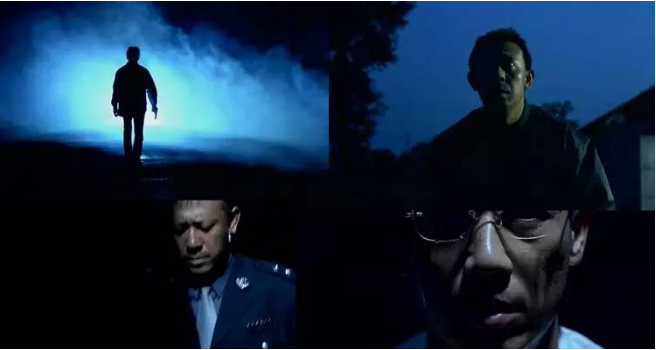
The example comes from the movie “Looking for a Gun”. This film is a suspense theme. A large number of scenes use hard light to portray the atmosphere and performance of the characters. What you want is the elusive shadows left by the hard light and the depressing feeling.
